A classic rowanberry jelly made with apples and fresh fruit is by far the most delicious thing I've tasted made with the fruit. If you have access to these-just maek some. It's something you have to taste it to believe.
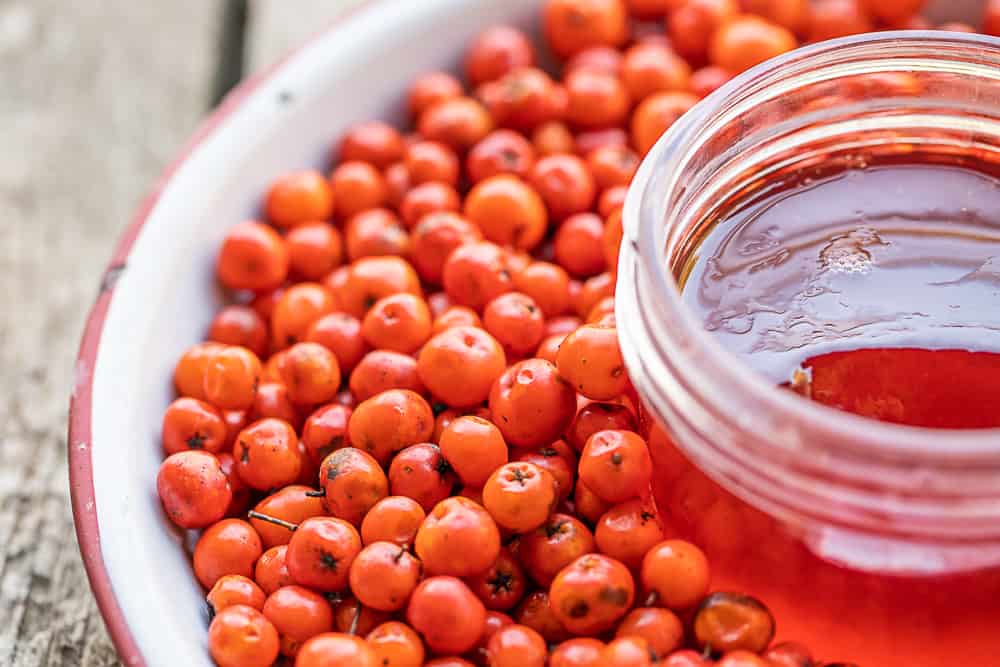
Rowanberries / mountain ash berries (Sorbus americana) are one of the more difficult fruits to work with I know of. At first I really, really wanted to find ways to use the fruits that made use of the entire fruit, and, yeah, it's difficult.
But, traditional rowan jelly is supposedly a good condiment for game, so I've been meaning to work out a version. I didn't have high expectations, but the jelly ended up being one of the most interesting I've had. The flavor is excellent, and the bitterness is there, but tempered by the perfume of apples and the sugar.
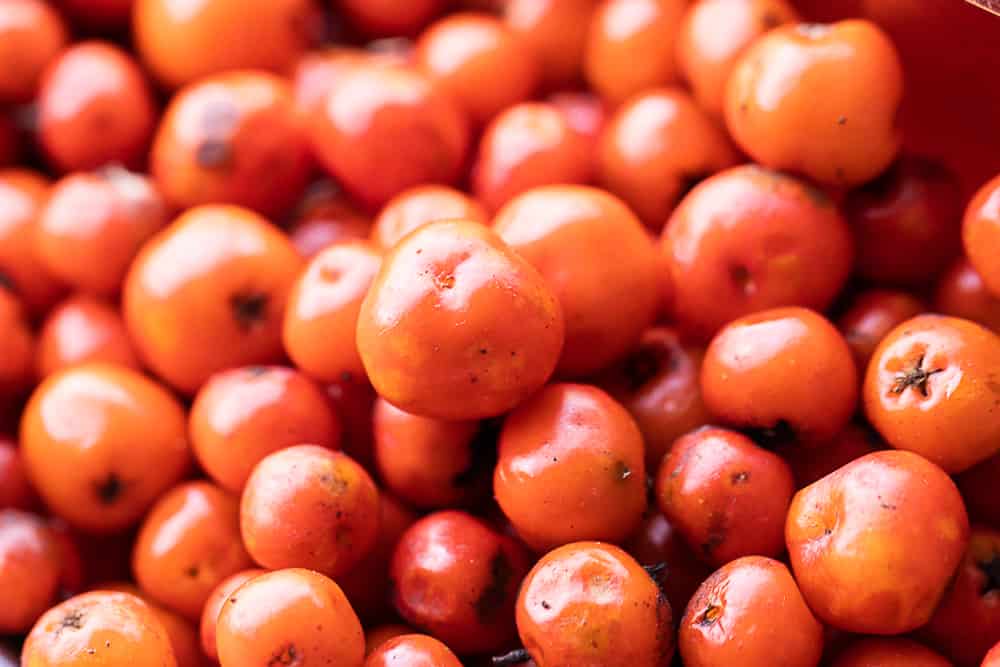
Pick your berries after multiple hard frosts
The berries are horrifically bitter, and they stay bitter if they haven't seen multiple hard frosts, which makes things doubly difficult since there's a number of the trees in areas I forage around the Twin Cities, but, every year, the cedar wax wings stripped the trees bare before I can get to them.
To beat the birds, I would pick the berries early, and try to work with them, but the results were always very bitter. It wasn't until I started finding the trees on the North Shore, north of Duluth where they grow in mass quantity, that I really got berries palatable enough to cook with.
The rowanberries on the North Shore were much better since they were exposed to multiple hard frosts, and for whatever reason, the birds don't seem to pay them as much attention as they do the berries a few hours south. So, if you're in the area and wondering, the key is to go get them in say, mid-October if you want to make something you can eat.
Back to the jelly itself, one of the reasons I was excited to make this was that it would be my first foray into a no-pectin added jelly. I usually add pectin just for the sake of covering my bases, but, as traditional rowan jelly includes apples that are strained out specifically for the purpose of pectin (and flavor and color) I saw no reason to add commercial pectin.
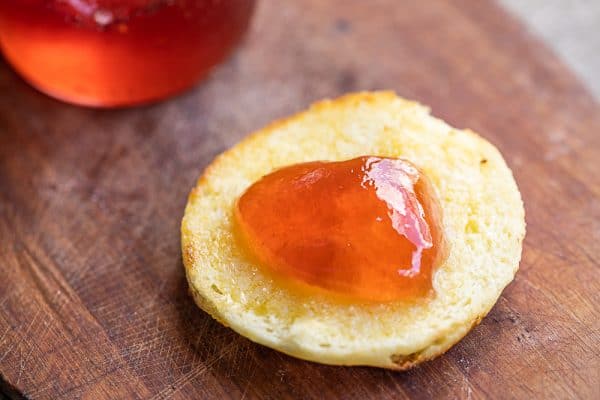
The result was is one of the best sets I've had in a jelly, and if you've ever wondered if making pectin-less jelly by adding apples is possible, trust me, it is, and it's great.
The flavor is a sort of crescendo, a pleasant bitterness and deeply rowan flavor underscored with sweetness. It's addicting, and the gentle set from the natural pectin seems to be a bit more forgiving than commercial pectin, the set on it is just perfect, barely holding together, quivering and jiggly. It's wonderful.
I haven't tried it with game yet, but rest assured, that's in the works.
The flavor is an acquired taste, but the sugar tames it enough so that even people unfamiliar with the berries will probably reach for seconds. Here's some of my favorite things I've eaten with it so far.
Use Ideas
- With strong flavored cheeses, especially goat, sheep and blue cheese like gorgonzola
- It likes cured meats, and salty sausages.
- The bitterness and sweetness is a good foil for liver, just add a splash of wine to the pan some liver was cooked in, add a good glob of jelly, a knob of butter, a dash of lemon juice, whisk and reduce until thickened, and voila, pan sauce.
- Mostly I've just been eating it for breakfast, and it's delicious on a buttered, toasted english muffin to show off the deep orange color.
- The bitterness reminds me a bit of bitter orange, so the next thing I'll be making is the same jelly here, but with orange peel cut into fine julienne.
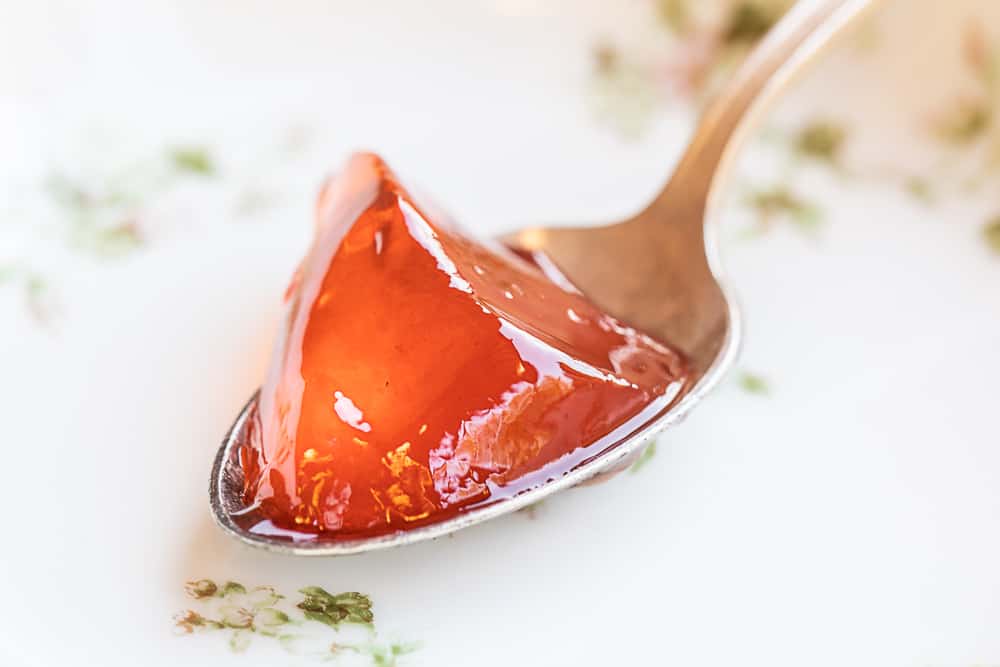
Classic Rowanberry Jelly
Ingredients
- 2 lbs green apples, such as granny smith See note
- 1 lb rowanberries
- 2 lbs (4 cups water)
- 2 teaspoons lemon juice or ¼ teaspoon citric acid
- 1 oz chopped fresh ginger optional
- 3.5 cups Sugar or as needed (use 1 cup per cup of strained juice)
Instructions
- Cut the apples into pieces including the skins and seeds.
- Gently mash the rowanberries with a potato masher or something similar.
- in a wide pot of 3-4 quart size, combine the apples, ginger, berries and water and bring to a simmer, stir, then turn the heat to low and cook, uncovered covered for twenty minutes, stirring occasionally. Don't mash the apples.
- Carefully strain the liquid into a strainer lined with a double thickness of cheesecloth or a jelly bag and allow to drain for a few hours. Don't squeeze the liquid from the cheesecloth unless you're ok with cloudy jelly.
- Discard the spent apple-berry mix.
- Combine the reserved liquid (you should have 3-4 cups. along with 1 cup sugar for each cup of reserved, strained liquid).
Doing set tests
- Chill a small metal bowl or similar in the freezer for doing set tests. I use small metal as it freezes the fastest.
- Mix the liquid and sugar, then bring to a boil, turn the heat to medium, and cook until the temperature starts to hover around 220F. Begin doing set tests a little after the mixture hits 220F. 223-5F is usually perfect for me, but let the set test be your guide.
- For the set tests, pour a teaspoon of jelly into the frozen bowl. Once you can see a gentle wrinkle on the top of the of the test surface when it cools you’re good, beat in the lemon juice or citric acid and pour the jelly into sterilized jars. Screw on lids and rings, and allow to cool. The jars will naturally seal themselves.
- Cooking and reducing the jelly will take about 25-30 minutes. I start to test the set around the 20 minute mark.
- Depending on the pan I’m using and how high the sides are, I may move it halfway off the burner to allow me to still use high heat without the pan overflowing. Cleaning up jelly overflows is, sticky and not fun.
Video
Notes
Apples
You want apples that have a good amount of natural pectin here, so use green ones like granny smith, or slightly unripe apples. For a 100% wild version, use crab apples.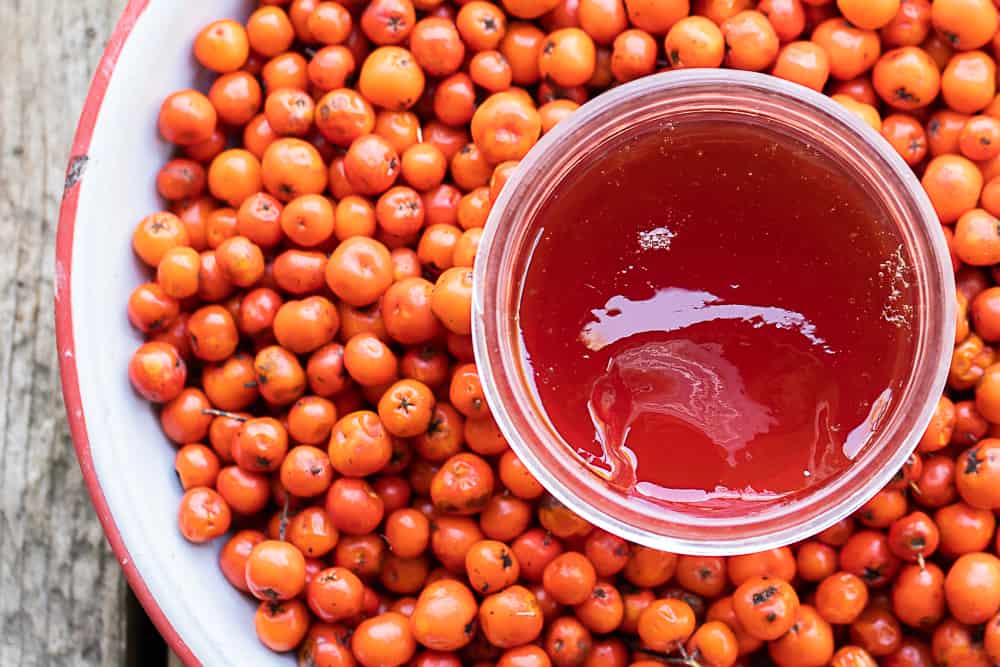

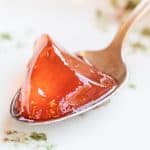
John Sapp
I tried making this Rowanberry Jelly following your recipe, and it turned out amazing! The flavor is perfectly balanced and reminds me of autumn. I can't wait to share it with my friends and family. Thanks for the detailed instructions!
Bruce Bourque
I heard somewhere that there are several varieties of European Mountain Ash (locally called dogberry) and some are suitable for jelly & such & other varieties are not. Do you have any knowledge / opinion on this. My wife made delicious dogberry jelly when we lived in Labrador (eastern Canada) but we tried it here in Newfoundland (Island further east) & it was incredibly bitter. Different trees / varieties? Tks vm
Alan Bergo
Hi Bruce. Yes there's different varieties. Sorbus americana is what I'm cooking with and is what I recommend. The only others I've had are one or two ornamentals I can't place-the berries never were as attractive as S. americana, and they were always stronger tasting. Consider it anecdotal as I don't know the exact cultivars.
Robert
My grandmother from Scotland used to make this. I found the recipe pretty easy to follow. One thing you should mention is that the jelly takes time to mellow and my jars tasted much better after a month in the pantry.
Bob
Lemon Juice listed as an ingredient, but where is it used
Alan Bergo
Check at the end of the recipe. It helps with pectin.
Susan Fraser
I have a mountain ash in my yard and never realized the berries could be used until someone from England was excited to see it. His partner uses the berries for medicinal recipes. So I set upon doing some research and found your blog. Thank you for the recipes which I will give a try in several months after a frost. I live in the north end of the Okanagan Valley in BC so it won't be for a while.. we just had a week on close to 40 degrees Celcius.
FYI I have made no pectin Quince Jelly for the last 5 years. But my access to the Quince tree has gone as my friend sold her home with her orchard this year. So I have been on the lookout for replacement jellies
Alan Bergo
Thanks Susan, glad you found it helpful. The rowan jelly is one of the best I've had.
Andrea
I am so happy to have found your information about Rowan berries, as I have a Rowan tree in my yard! I’m curious about this recipe. There doesn’t seem to be any sugar listed in the ingredients, but the instructions say to add a cup per cup of liquid. So do we add around four cups of sugar? Thank you!
Alan Bergo
Andrea, thanks, I could see how that could be confusing, I adjusted it, and, yes, it is a classic jelly, with equal parts sugar and strained liquid. No pectin is needed. Let me know how it turns out for you-and do try to get them after a frost if at all available.
Elizabeth Kane
You mention sealing the jars but not what kind of lids so should they also be canned in a boiling water bath and for how long? I find that other jams and jellies I make get mold after a couple of weeks otherwise orxafter a month in th he fridge. Canned my jams good for a couple of years.
Alan Bergo
You can waterbath process the jelly like any other jelly for the same amount of time for pints or quarts.
Cal
I've tried this in the past but ended up with something that was unpleasantly bitter and puckery. Frost being the answer and birds being the problem, do you think that picking the berries early and freezing and thawing them for a coupe of cycles would reduce the bitterness in the same way?
Alan Bergo
This jelly is delicious, but collections can vary a bit in taste. That being said, since the whole berries aren't being used, it's quite milder than most who've tasted fresh rowanberries would expect. Picking and freezing the berries hasn't done anything for me. I would give this jelly another shot, it's one of my favorites.
John G
May I jump in here? I make this every year; yes, there's a slight bitterness but it's addicting. You can freeze the berries which mellows them; I guess you could freeze, thaw and re-freeze but I've not bothered. I've also found that the red variety is less bitter than the orange berries. It's fantastic served with venison or melted into a jus with sherry for pheasant. Good luck!
Alan Bergo
Thanks John. I agree, freezing, thawing, and re-freezing is tedious IMO. But, there is a definite impact from the fruit undergoing repeated freezes on the tree, although it's hard to pin down unless you have a tree in your yard. I used to know a few trees with the reddish fruit (some ornamental/cultivar) it never produced berries as attractive as the giant orange ones, and around here they seemed prone to powdery mildew. If I see some I'll make sure to gather them to try. I do really like the strong taste of the orange fruit though.
Jacques-Alexandre ARMEDE
i've been thinking that a liquor would make good work of those berries.
I love your blog, a true goldmine